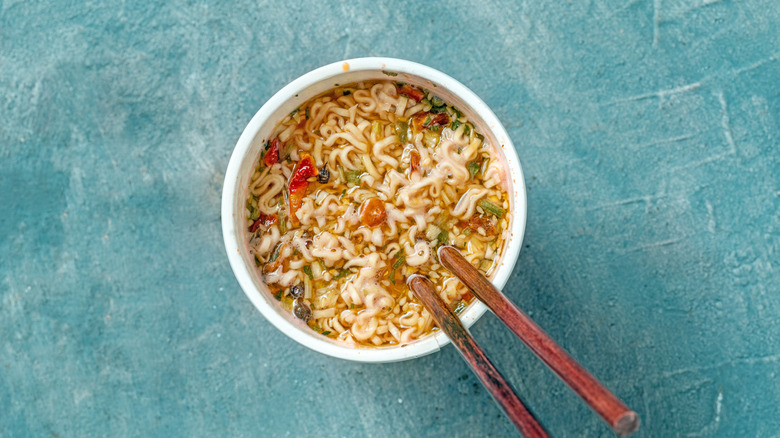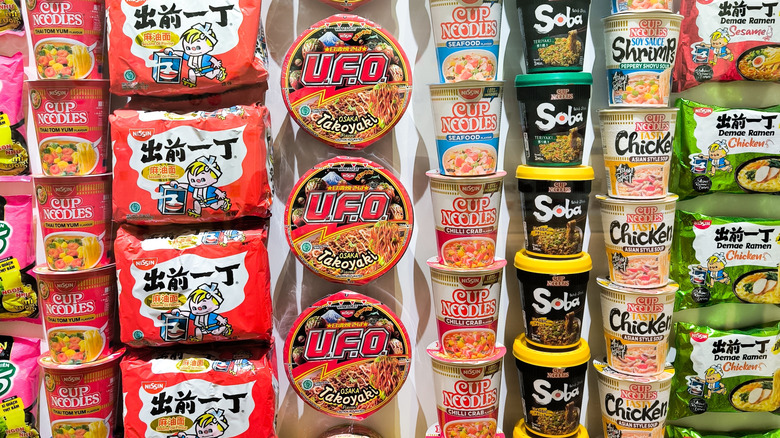The Country That Produces The Most Instant Ramen Isn't Japan
On those long, low-energy days when cooking feels impossible, few things are more comforting than knowing there's a cup of instant ramen waiting in your cupboard. Typically requiring only hot water — though you could always take a cue from celebrity chefs and doctor up your ramen like Giada De Laurentiis did in college — instant ramen packages include dried noodles, flavor packets, and sometimes oil or dehydrated vegetables. Though often associated with Japanese cuisine, Japan isn't actually the top producer of instant noodles. That title goes to China, which led global production with an astounding 5.03 million metric tons of instant noodles in 2022 (per Statista).
China also tops the charts for global instant noodle consumption and demand, accounting for nearly 40% of the world's instant noodle servings — over 43.8 billion in 2024 alone, according to the World Instant Noodles Association. Among the top instant ramen consumers in 2024 were Indonesia, with a demand of 14,680 million servings, and India at 8,320 million. Japan came in fifth for consumption at 5,901 million servings and produced around 5.8 billion packages of instant noodles in 2023 (per Statista).
Ramen origins can be traced back to China
Ramen is widely recognized as a distinctly Japanese dish today, but its roots can be traced back to China. The earliest version of the dish arrived in Japan around the mid-1800s, known then as "Chinese soba," and was primarily served in the Chinatown districts of port cities. Sold from street carts by Chinese immigrants, it offered an affordable, filling meal that quickly became popular among Japan's working class in the late 19th and early 20th centuries.
Still, the origins of instant ramen trace back to Japan. First developed in 1958 in response to post-war food shortages and a surplus of wheat flour, the ready-made meal quickly rose in popularity. This led to the creation of the well-known Cup Noodle brand in 1971, revolutionizing convenience food on a global scale. Around the same time, China began ramping up its own production of instant noodles, especially with the rise of Master Kong in 1991 — owned by Ting Hsin International — whose braised beef flavor would go on to become a cultural staple and a major driver of China's instant noodle dominance.
Today, ramen has evolved far beyond its instant meal roots and has been reinvented around the globe as both a comforting staple and a premium dining experience. From upscale restaurant bowls with house-made broths to playful twists like ramen grilled cheese and crushed ramen as a crispy salad topper, this once-humble dish is now a universally beloved canvas of creativity.


